Related Research Articles
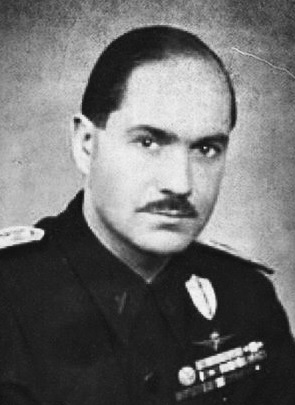
Alessandro Pavolini was an Italian politician, journalist, and essayist, notable for his involvement in the Fascist government, during World War II, and also for his cruelty against the opponents of fascism.
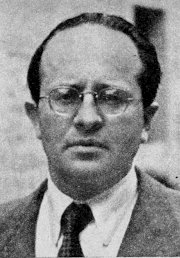
Fernando Mezzasoma, also referred to as Ferdinando, was an Italian fascist journalist and political figure. He was deputy national secretary of the National Fascist Party and Minister of Popular Culture of the Italian Social Republic.
Fascio is an Italian word literally meaning "a bundle" or "a sheaf", and figuratively "league", and which was used in the late 19th century to refer to political groups of many different orientations. A number of nationalist fasci later evolved into the 20th century Fasci movement, which became known as fascism.
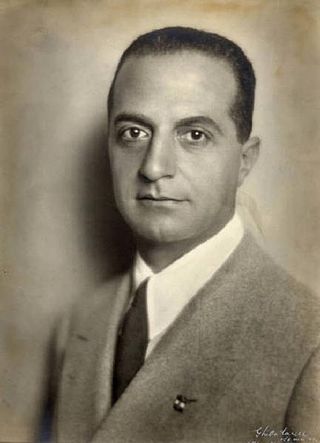
Giuseppe Bottai was an Italian journalist, and member of the National Fascist Party of Benito Mussolini.

Grazia is a weekly women's magazine that originated in Italy with international editions printed in Albania, Argentina, Australia, Bahrain, Bulgaria, China, Croatia, Colombia, France, Germany. Greece, Indonesia, India, Jordan, Macedonia, Mexico, the Netherlands, Poland, Portugal, Pakistan, Qatar, Serbia, Slovenia, South Korea, Spain, Thailand, and the United Kingdom.

Augusto Turati was an Italian journalist and Fascist politician.

The "Manifesto of Fascist Intellectuals", by the actualist philosopher Giovanni Gentile in 1925, formally established the political and ideologic foundations of Italian Fascism. It justifies the political violence of the Blackshirt paramilitaries of the National Fascist Party, in the revolutionary realisation of Italian Fascism as the authoritarian and totalitarian rėgime of Prime Minister Benito Mussolini, who ruled Italy as Il Duce, from 1922 to 1943.
The Corriere dei Piccoli, later nicknamed Corrierino, was a weekly magazine for children published in Italy from 1908 to 1995. It was the first Italian periodical to make a regular feature of publishing comic strips.

Gerarchia was a monthly fascist magazine/journal published in Milan, Italy, between 1922 and 1943.
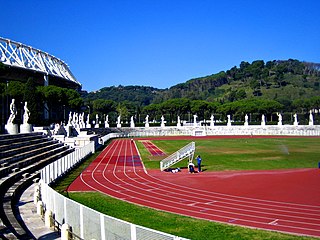
The Stadio dei Marmi is one of four stadiums in the colossal sports complex the Foro Italico, initially named Foro Mussolini. The other stadiums are the Stadio Olimpico, the Stadio del tennis Romano, and the Stadio Olimpico del Nuoto. It was designed in the 1920s as a complement to the annexed Fascist Academy of Physical Education, to be used by its students for training. The Stadio dei Marmi first opened in 1932, on the 10th anniversary of the March on Rome, near the Roman neighborhood Monte Mario, by the architect Enrico Del Debbio under the Fascist ruler Benito Mussolini. The Stadio dei Marmi is encircled by sixty, 4-meter tall classical statues of athletes made from Carrara marble. The stadium was built to celebrate Fascist accomplishments and the Gioventú del Littorio, the youth movement of the National Fascist Party of Italy. In its twenty-year reign, the Fascist regime used sports to introduce and instill new fascist traditions, ideals, customs, and values, with the goal of forming citizen warriors. The Stadio dei Marmi was used to host some of the field hockey preliminaries for the 1960 Summer Olympics and also hosted the opening ceremony for the 2009 World Aquatics Championships.

Lando Ferretti was an Italian journalist, politician and sports administrator.
The Sandro Italico Mussolini School of Fascist Mysticism was established in Milan, Italy in 1930 by Niccolò Giani. Its primary goal was to train the future leaders of Italy's National Fascist Party. The school curriculum promoted Fascist mysticism based on the philosophy of Fideism, the belief that faith and reason were incompatible; Fascist mythology was to be accepted as a "metareality". In 1932, Mussolini described Fascism as "a religious concept of life", saying that Fascists formed a "spiritual community".
Novella 2000 is a weekly celebrity and women's magazine published in Milan, Italy. Founded in 1919, it is one of the oldest publications in the country. It is also one of the most read and well-known Italian gossip magazines.
Omnibus was a weekly illustrated general cultural magazine published in Milan, Italy, between 1937 and 1939. Its subtitle was settimanale di attualità politica e letteraria. It is described as the "father of Italian magazines", especially in regard to the use of photographs and images. The magazine was closed by the fascist authorities.
Il Travaso delle idee, mostly known as Il Travaso, was a satirical magazine which was in circulation between 1900 and 1966 with an interruption in the period 1944–1946. Its subtitle was Organo ufficiale delle persone intelligenti. The magazine was headquartered in Rome, Italy.
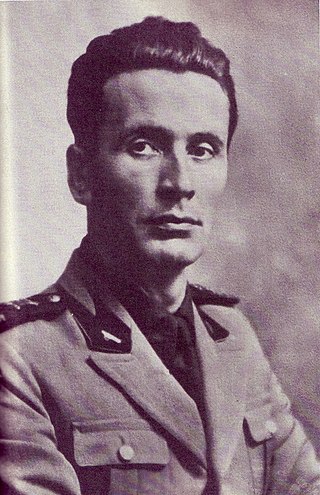
Niccolò Giani was an Italian Fascist philosopher and journalist who was the founder of Fascist mysticism.
Critica fascista was a biweekly cultural magazine which was founded and edited by Giuseppe Bottai in Rome, Italy. The magazine existed during the Fascist rule in the country from 1923 to 1943. Over time it became one of the most significant publications of the fascist period in Italy.
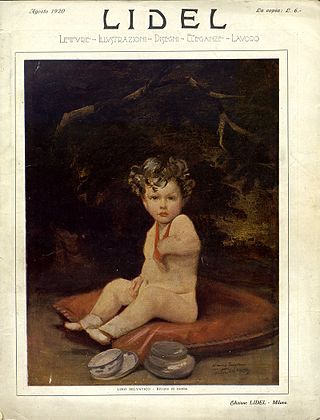
Lidel was an Italian nationalist women's fashion magazine which was in circulation in the period 1919–1935. The title was a reference to its founder's name, Lydia Dosio De Liguoro, as well as to the words Letture, illustrazioni, disegni, eleganze, lavori. The magazine played a significant role in the birth of Italian fashion, but at the same time became one of the most militant publications of Fascist Italy.
Riccardo Bauer (1896–1982) was an Italian anti-fascist journalist and political figure. He was one of the early Italians who fought against Benito Mussolini's rule. Due to his activities Bauer was imprisoned for a long time and was freed only after the collapse of the Fascist rule in 1943.
References
- 1 2 3 4 "Sport Fascist, Lo" (in Italian). Biblioteca Digitale. Retrieved 8 October 2021.
- ↑ Eleonora Belloni (2014). "The birth of the sport nation: Sports and mass media in Fascist Italy". Aloma. 32 (2). ISSN 1138-3194.
- ↑ Rosarita Cuccoli (2020). The place for social analysis in the press coverage of sports: a comparison of sports newspapers and general press in Italy’s media ecosystem (PhD thesis). University of Rennes 1. p. 268.
{{cite thesis}}: CS1 maint: location (link) - 1 2 3 4 Enrico Landoni (2020). "Propaganda and Information Serving the Italian Sports Movement: The Case of the Periodical Lo Sport Fascista(1928‒43)". Journal of European Periodical Studies. 5 (1): 45–47. doi:10.21825/jeps.v5i1.15754.
- ↑ Marco Giani (17 November 2020). "Historical Treasures from Milan. Archivio di Stato. Part 2". Playing Posts. Retrieved 8 October 2021.
- 1 2 Simon David Martin (2003). ‘Football and Fascism: Local Identities and National Integration in Mussolini’s Italy’ (PhD thesis). University College London. pp. 35, 41, 44, 81.